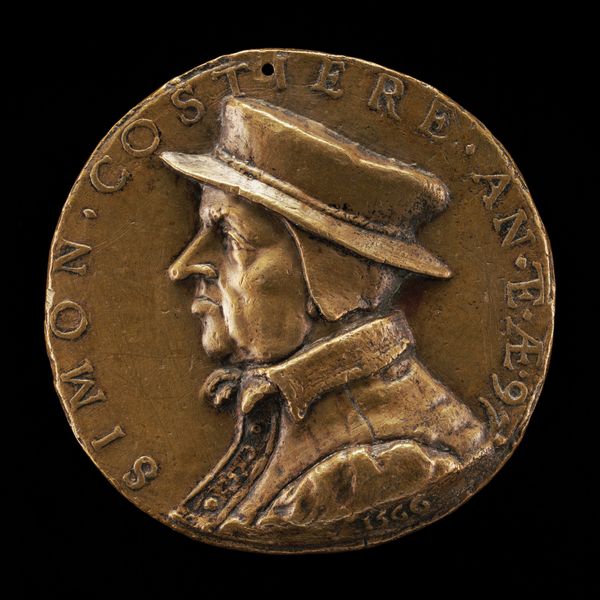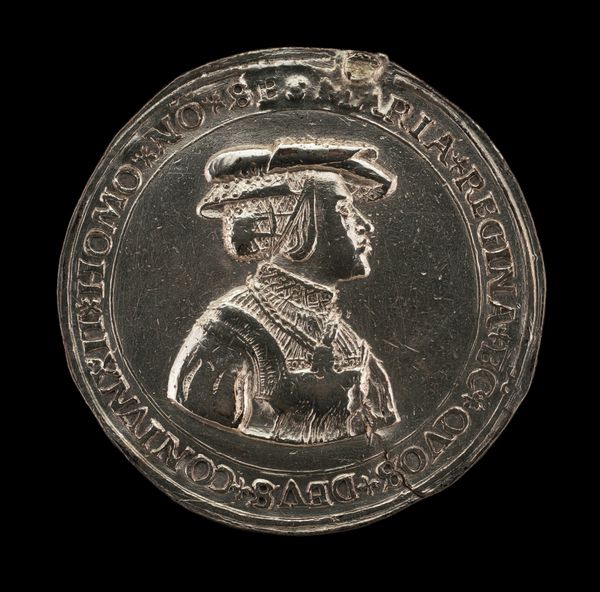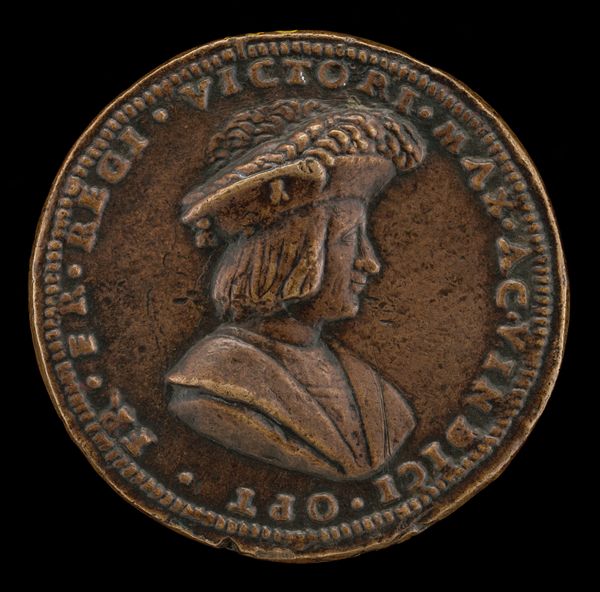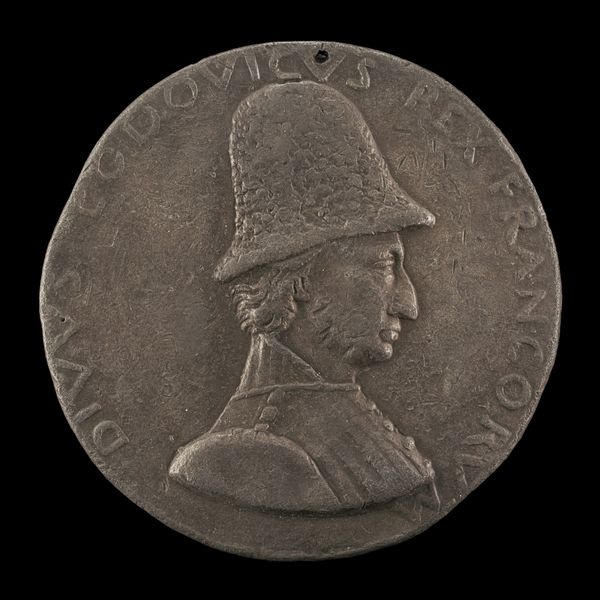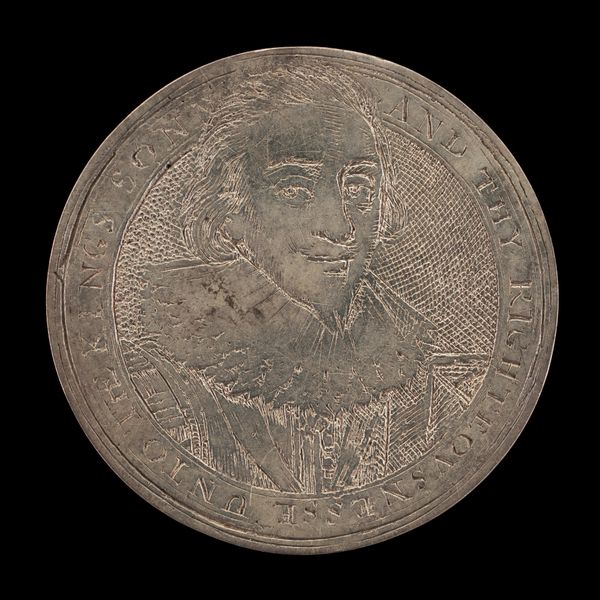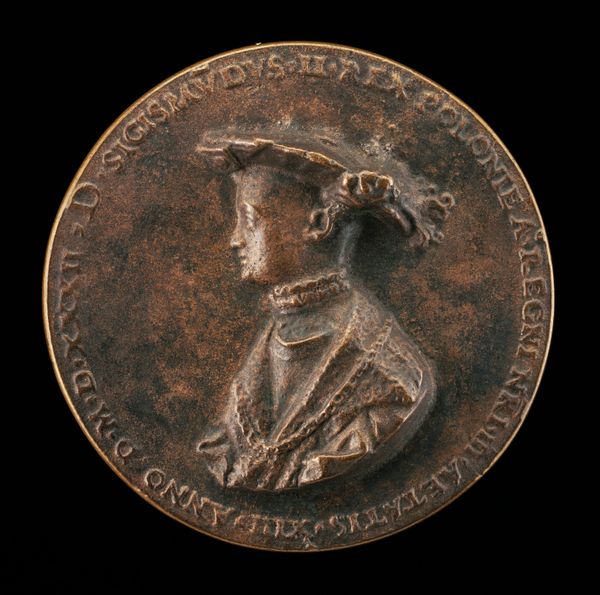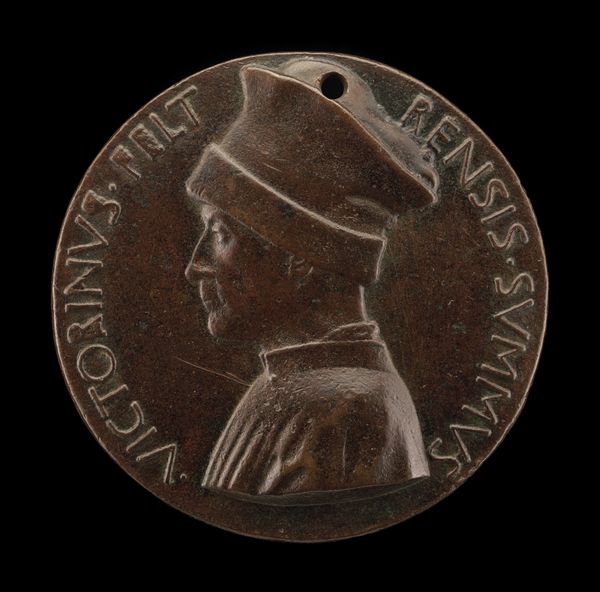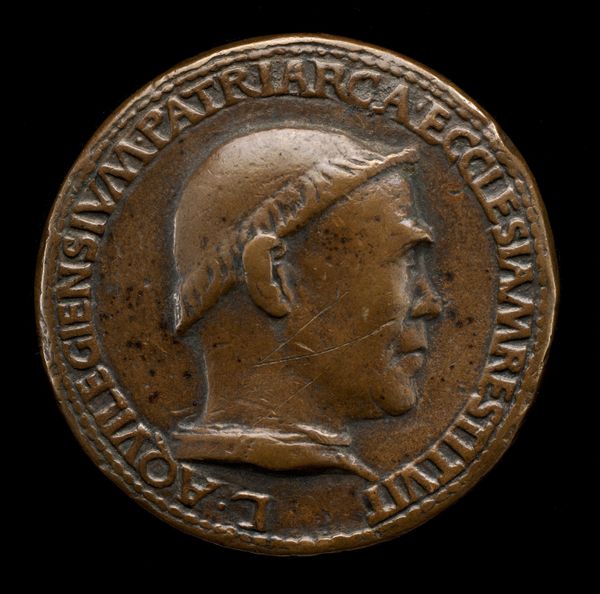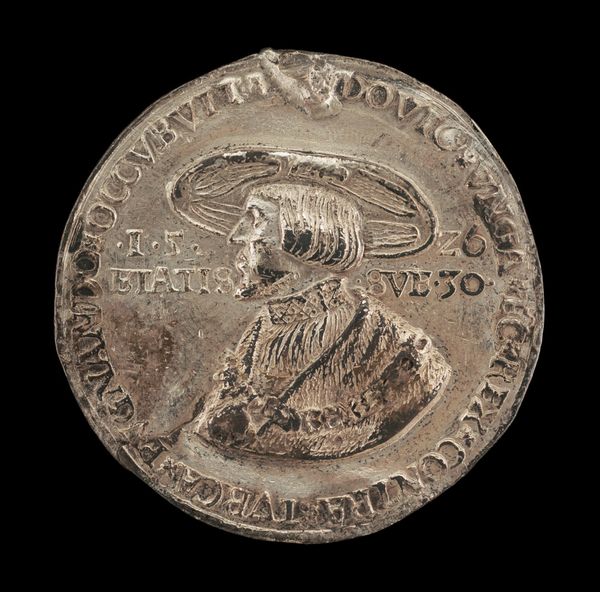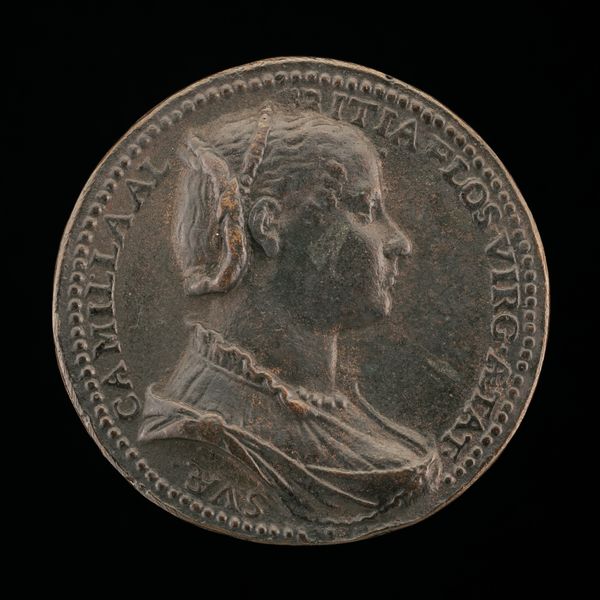
metal, sculpture
#
portrait
#
medal
#
metal
#
sculpture
#
11_renaissance
#
sculpture
Dimensions: overall (diameter): 4.68 cm (1 13/16 in.) gross weight: 44.99 gr (0.099 lb.) axis: 12:00
Copyright: National Gallery of Art: CC0 1.0
Curator: Here we have a piece by Friedrich Hagenauer: a portrait medal from 1539, crafted from metal. The subject is Michael Mercator, born in 1491, and known to history as a diplomat. Editor: Immediately, I get this impression of cool authority. There's something very contained and composed about that profile—so crisp against the dark. But the metal gives it this strangely...fragile permanence, almost like fossilized composure. Does that make sense? Curator: Perfectly. It encapsulates the Renaissance impulse, to hold the classical world close in both memory and ambition, which is achieved via its own imagery and style. A profile bust like those favored by Roman emperors! Even in miniature like this medal format. Consider also the inscription ringing around the edge. Editor: Right. So it's not just about preserving the likeness of Mercator, but also something about broadcasting a set of values—success, ambition, education. He is permanently burnished into this metal...what was his diplomacy like, I wonder? Did he actually resemble this noble image? Curator: One can certainly consider what kind of political theater such objects would enable, circulating through various courts as gifts, commemorations, and signs of allegiance. Portraits were then extremely valuable means of networking. This metal medium would also afford durability that paintings may not. Editor: Almost like a proto-LinkedIn, then? It’s funny to imagine him carefully handing this out: "Here's my head. Impressed?" Curator: Perhaps! Yet I wonder about how the materiality contributes meaning; metal and stone—these have unique ways of conveying stability and presence that even the most flattering portrait in paint may struggle to communicate. It’s a claim about how the person within wants to be viewed for posterity. Editor: A claim carved in steel! I guess I feel drawn into that contrast now; the hardness and permanence hinting at so many ephemeral, human negotiations, a game played in courts of intrigue. And how weird to think someone, maybe Mercator himself, once clutched this exact object...History's right here in your palm! Curator: Precisely. It speaks to the layers of performance involved in diplomacy, with such pieces designed to endure and persuade in the ongoing construction of one's legacy. Editor: So we end with diplomacy in a metal cast; from court intrigue to curated image... What a thing to hold!
Comments
No comments
Be the first to comment and join the conversation on the ultimate creative platform.
